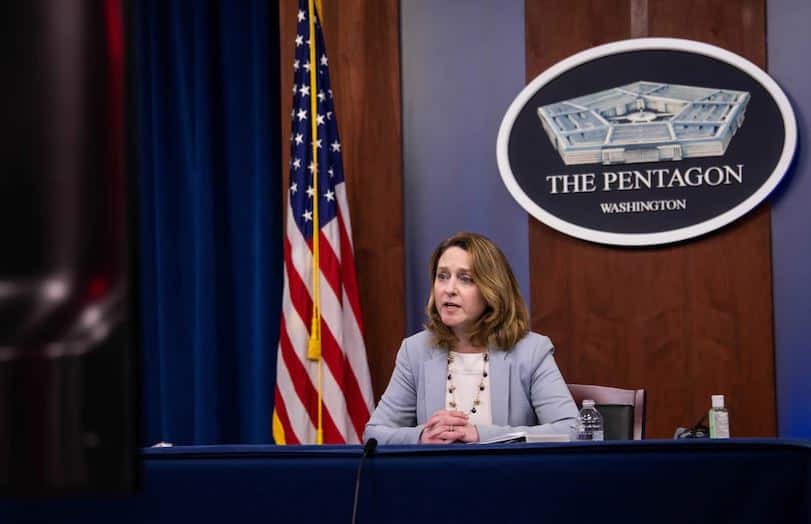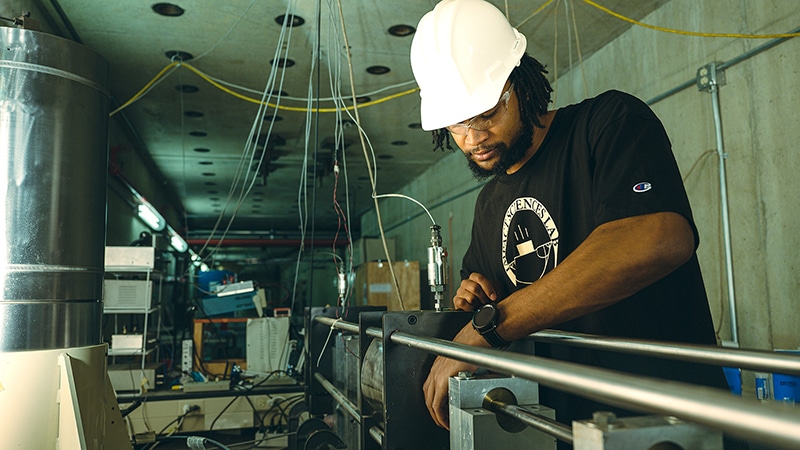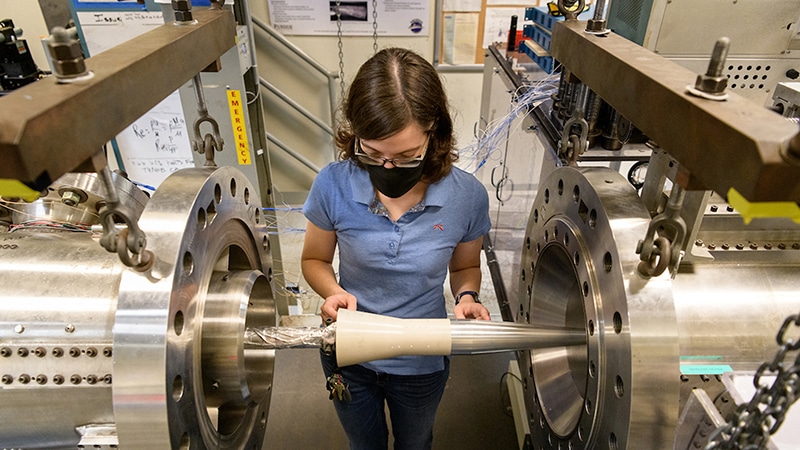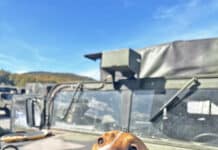WEST LAFAYETTE, Ind. — Purdue University’s strength in state-of-the-art aerospace technology, energetic materials, semiconductors, and hypersonics research stands as a testament to the university’s future in U.S. national security and demonstrates why U.S. Deputy Secretary of Defense Kathleen Hicks and her advisers visited campus Thursday (Aug. 18) on a tour of essential research facilities.
As a central hub for innovation, Purdue attracts talented faculty who drive high-tech manufacturing and facilitate quality job placement for students. Projects including the High-Speed Propulsion Laboratory and the multifaceted Hypersonics Applied Research Facility (HARF) mark national security advances and reflect interest and investment by partners in industry and government.
Hicks received a firsthand look at Purdue’s national security focus at the Maurice J. Zucrow Laboratories, Birck Nanotechnology Center, and other facilities during a campus tour.
“Purdue is deeply honored to welcome the deputy secretary and her team to a campus that is proud to contribute in any way it can to the cause of our national security,” Purdue President Mitch Daniels said. “We are investing heavily in the infrastructure, human and physical, to design, test, and develop the systems necessary to protect the freedoms Americans enjoy. As home to some of the world’s most brilliant researchers in areas critical to the national defense, Purdue has a special capacity and, therefore a duty, to do its part, and we will.

Throughout her travel, Dr. Hicks focused on linking the department’s resources to our nation’s strategic priorities, including the pacing threat of our near-peer global competitors, and ensuring the Department of Defense remains the world leader in cutting-edge innovation.
Purdue’s investments in hypersonics and aerospace technology position the university as a compelling partner for national defense projects from industry and government. Hypersonics is a critical area of focus under Purdue’s Next Moves, strategic initiatives designed to advance the university’s competitive advantage.
Purdue already has established excellence in other key research areas considered critical to national security, including microelectronics. Strategic initiatives such as the first comprehensive Semiconductor Degrees Program are intended to prepare a next-generation workforce for industry, while a separate partnership with SkyWater Technology will result in a future state-of-the-art semiconductor manufacturing facility.

The University began expanding its footprint as a national security hub more than two years ago with announced plans to develop the first quiet Mach 8 wind tunnel in the world. It will partner with the already existing Mach 6 tunnel on campus as well as a hypersonic pulse (HYPULSE) reflected shock/expansion tunnel, and the establishment of the Purdue Applied Research Institute, a new, nonprofit research arm of the university.
The High-Speed Propulsion Laboratory announced in April was preceded by projects such as Hypersonics Applied Research Facility (HARF), which will house both the Mach 8 and the HYPULSE reflected/shock expansion tunnel as well as the Hypersonics Advanced Manufacturing Technology Center (HAMTC).

In February, Purdue was selected by the Air Force Research Labs (AFRL) as the lead academic partner and headquarters for the AFRL Regional Research Hub – Midwest. The selection puts Purdue at the center of dozen academic and 50 industrial partners in 12 states that are working to further research and development in critical areas of national security.
The abundance of new facilities has brought with it new industry partnerships and investments at Purdue, including Rolls-Royce, GE Additive, Dynetics, Lockheed Martin, and Boeing.

About Purdue University
Purdue University is a top public research institution developing practical solutions to today’s toughest challenges. Ranked in each of the last four years as one of the 10 Most Innovative universities in the United States by U.S. News & World Report, Purdue delivers world-changing research and out-of-this-world discovery. Committed to hands-on and online, real-world learning, Purdue offers a transformative education to all. Committed to affordability and accessibility, Purdue has frozen tuition and most fees at 2012-13 levels, enabling more students than ever to graduate debt-free. See how Purdue never stops in the persistent pursuit of the next giant leap at
All content herein is owned by author exclusively. Expressed opinions are NOT necessarily the views of VNR, authors, affiliates, advertisers, sponsors, partners, technicians, or VT Network. Some content may be satirical in nature.
All images within are full responsibility of the author and NOT VNR.
Read Full Policy Notice - Comment Policy






























